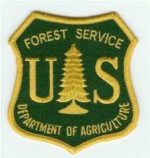
The Nez Perce-Clearwater National Forests has prepared a Draft Record of Decision (Draft ROD) and Final Supplemental Environmental Impact Statement (Final SEIS) for the Hungry Ridge Restoration Project.
These were created in response to a June 2022 court order enjoining the Hungry Ridge and End of the World projects on the forest. This analysis provides updated information about the Hungry Ridge Restoration Project’s environmental effects related to old growth and both projects’ cumulative effect on old growth forests.
A notice of document availability was sent to those who submitted specific written comments in response to the 45-day comment period on the Notice of Intent to prepare and EIS (December 2022) or the 45-day comment period on the Draft SEIS (March
2023). An objection to the content of the Draft Record of Decision and Final Supplemental Environmental Impact Statement must be received within 45-days of the Legal Notice.
The Hungry Ridge Restoration Project is located on the forest’s Salmon River Ranger District approximately 17 miles southeast of Grangeville within the Mill Creek and Johns Creek watersheds, tributaries to the South Fork of the Clearwater River.
The project decision proposes timber harvest on approximately 8,000 acres designed to reduce hazardous wildfire fuels in high-risk fire sheds and improve forest health and resiliency. The project decision also proposes approximately 12,000 acres of prescribed burning in the project area to reduce hazardous wildfire fuels accumulation.
Hand thinning is proposed in areas adjacent to private property to further reduce the risk of high-intensity wildfire. These actions are in the Nez Perce-Clearwater Lower Salmon Landscape, part of Wildfire Crisis Strategy to proactively addresses wildfire threats to local communities.
Other land management activities proposed through the Hungry Ridge Restoration Project are designed to improve wildlife and aquatic habitats and to restore soil and meadows. Road work associated with the project contributes to aquatic habitat restoration by reducing runoff and erosion and replacing failing or undersized culverts.
The Final SEIS presents the affected environment and environmental impacts of potential treatments of old growth from the three action alternatives. Cumulative effects with the End of the World project are also presented. All alternatives meet Forest Plan Appendix N standards to maintain a viable population of old-growth-dependent species. Appendix F includes the Forest Service responses to comments received on the Draft SEIS presented in March 2023.
Questions about the Hungry Ridge Restoration Project can be directed to Jeff Shinn, Salmon River District Ranger (208-839-2103) or Jennie Fischer, Interdisciplinary Team Leader (208-983-4048).

